Navigating the complexities of contract termination can be daunting, especially when breaches are involved. It's essential to clearly communicate your intentions while maintaining professionalism and clarity. In this article, we'll explore effective letter templates to help you articulate your position and ensure that all necessary details are included. Ready to learn how to craft the perfect termination letter? Let's dive in!
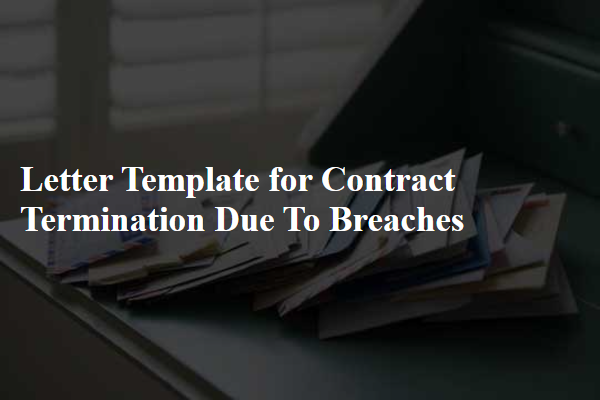
Clear identification of parties involved.
The parties involved in this contract termination include [Your Company Name], the terminating party, located at [Company Address], and [Other Party Name], the breached party, located at [Other Party Address]. This notice pertains to the original agreement dated [Contract Date], which has been violated. Specific breaches noted include [Brief Description of Breaches], such as [Examples of Breaches, e.g., failure to deliver goods or services, non-payment, etc.]. Both parties' obligations under the contract have been reviewed, and evidence of these breaches has been documented in the context of the agreed terms. Immediate termination of this agreement is hereby requested due to the unresolved issues impacting business operations and contractual integrity.
Specific reference to breached contract terms.
A contract termination due to breaches occurs when one party fails to uphold its obligations, leading to significant repercussions. Specific breached terms might include non-payment clauses, delivery deadlines, or quality standards, which can vary across agreements. For instance, a commonly breached term could involve failure to deliver goods within the agreed timeframe, such as 30 days post-order date, which directly violates contractual commitments. Another critical term could relate to payment schedules, where failure to remit payment within a designated period, typically 15 days post-invoice, constitutes a breach. Such violations necessitate formal notification of termination, often requiring documentation of the breaches for legal clarity. Addressing these issues requires an understanding of the contractual context and the implications of non-compliance, ensuring that all parties are aware of their rights and responsibilities under the applicable regulations governing contract law.
Detailed description of breach incidents.
Numerous breaches of contract have occurred, significantly undermining the agreement between the involved parties. For instance, the first incident happened on March 15, 2023, when the party failed to deliver the agreed-upon materials, specifically 500 units of the custom-designed components, that were due by March 10, 2023. This delay not only halted production schedules but also resulted in additional costs amounting to $10,000 due to expedited shipping fees for alternative sourcing. Furthermore, on April 2, 2023, an agreement violation occurred when the subcontracted services did not meet quality standards as outlined in Section 5 of the contract, leading to a rejection of 200 units during quality assurance checks. Additionally, communication lapses persisted, with a failure to respond to critical emails within a 48-hour timeframe, impacting project timelines and stakeholder confidence. These incidents collectively illustrate a pattern of non-compliance that justifies the decision to terminate the contract.
Statement of termination effective date.
A contract termination notice, issued due to breaches of stipulated terms, typically includes a specific effective date which marks the cessation of obligations and rights under the agreement. For instance, a breach of contract concerning a service level agreement (SLA) might trigger a termination clause if the service provider fails to meet critical performance metrics--such as response times exceeding 24 hours for urgent requests--after multiple warnings. The termination effective date, often calculated based on the date the breach was first reported, becomes pivotal in determining any potential penalties or outstanding responsibilities. Communication of this notice should adhere to stipulated guidelines in the agreement, ensuring the recipient is fully informed and legally bound to comply.
Request for confirmation of receipt and action.
A formal request for confirmation of receipt and action regarding contract termination due to breaches should include specific details about the parties involved, such as the contracting company's name and the individual receiving the letter. Breaches refer to violations of the agreed-upon terms outlined in the contract, which could include delivery delays, quality issues, or failure to meet deadlines. Companies are often required to follow stipulated notice periods, which should be explicitly mentioned to clarify expectations. Including a deadline for response ensures timely communication. Addressing potential implications of the termination, such as financial penalties or ongoing obligations, provides further context. Ensuring that contact information for the sender is clearly stated guarantees a clear line of communication.


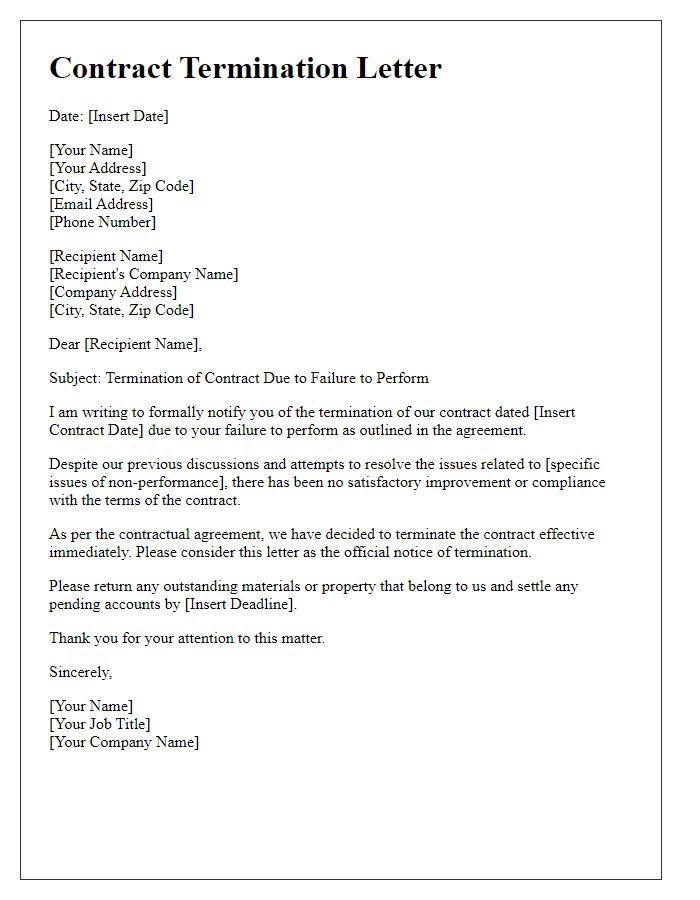
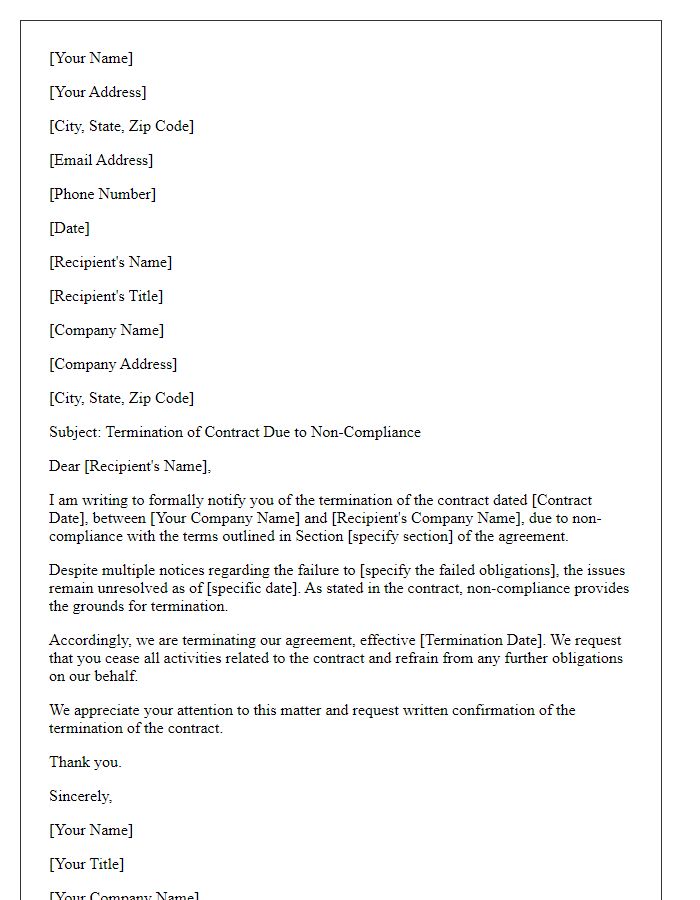
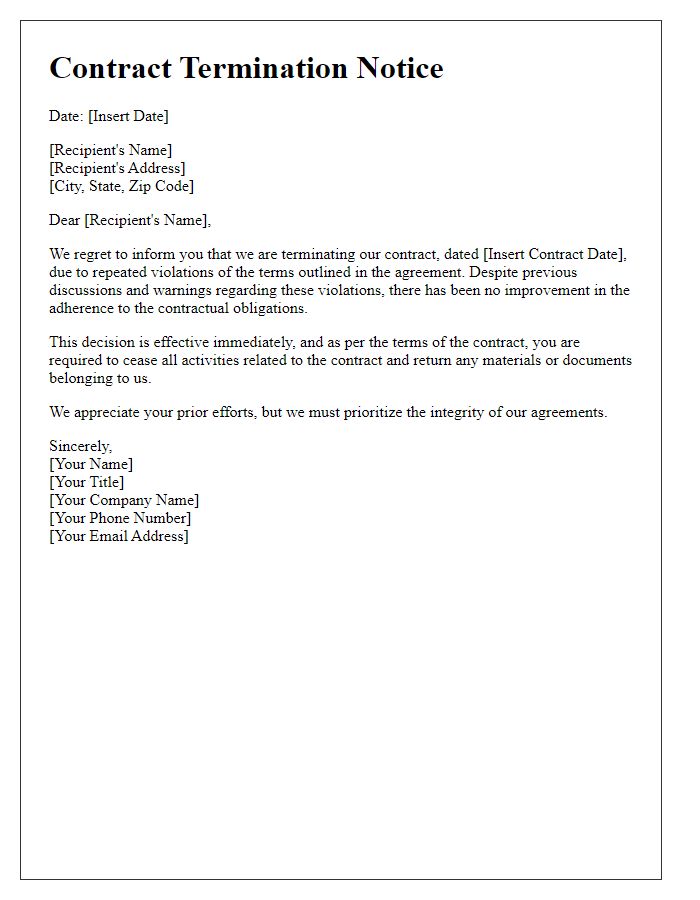
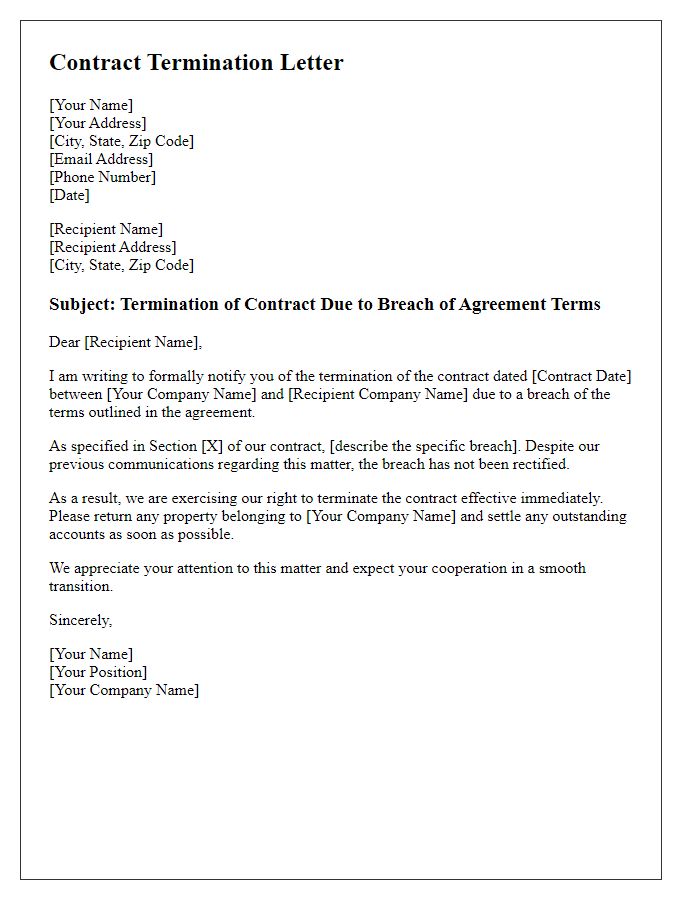
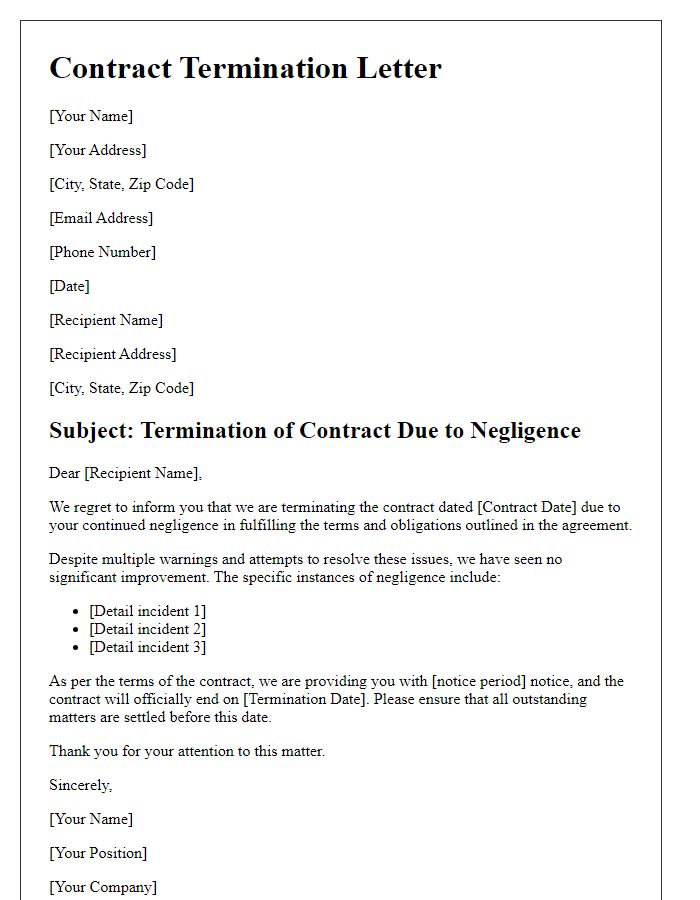
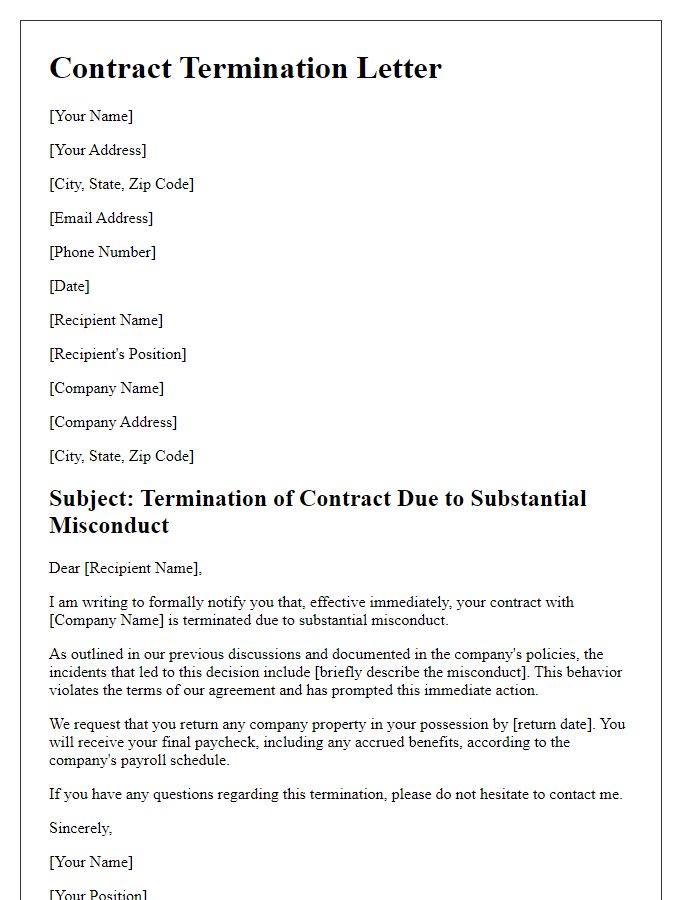
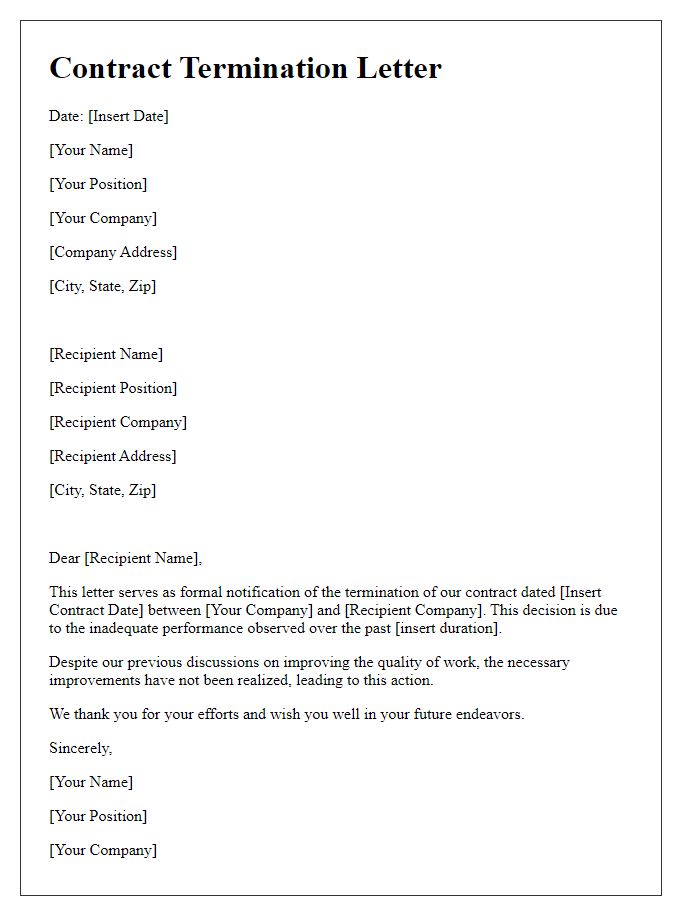
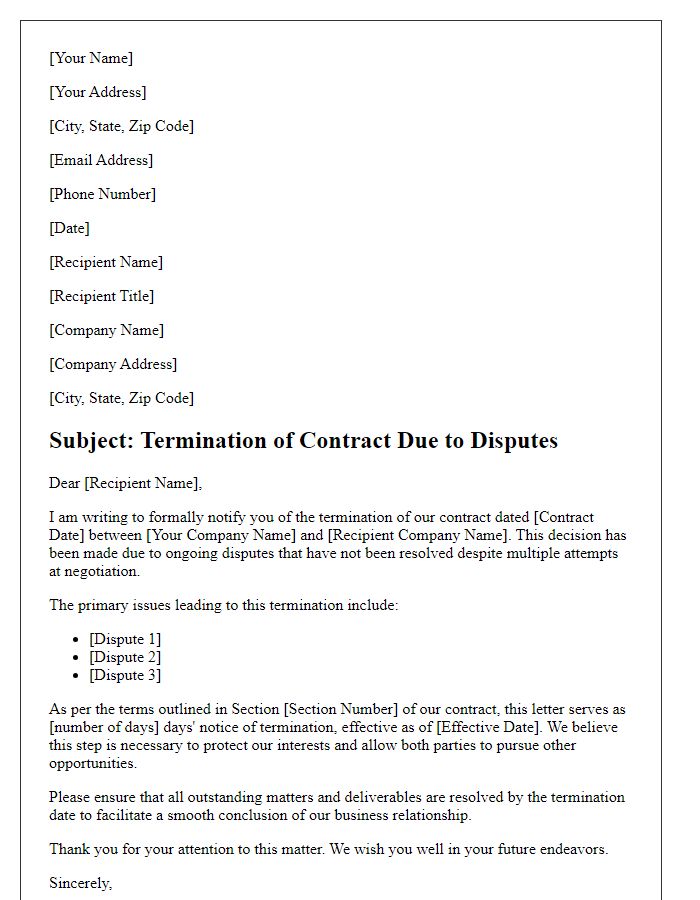
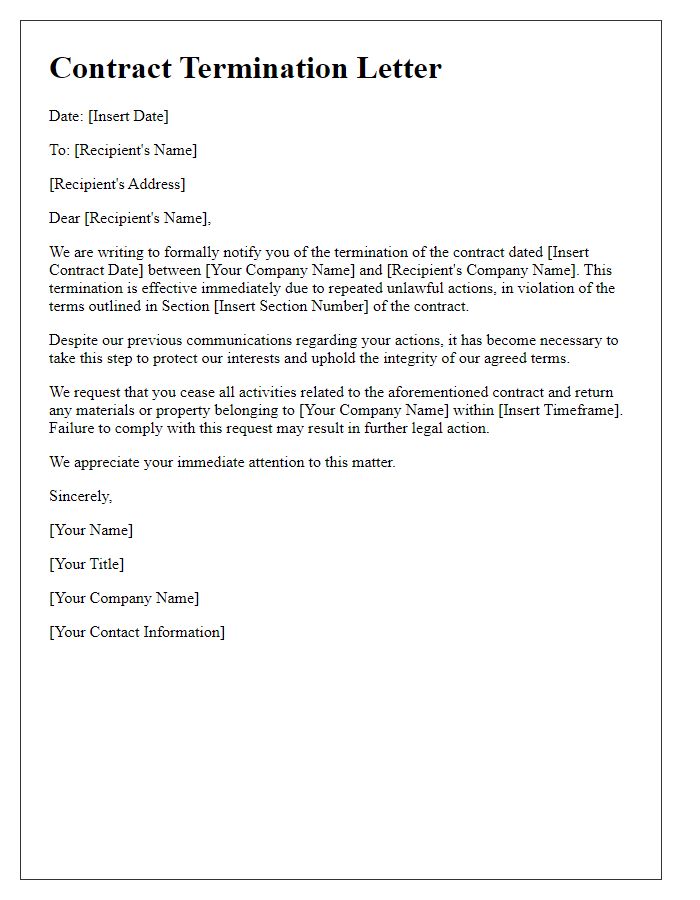




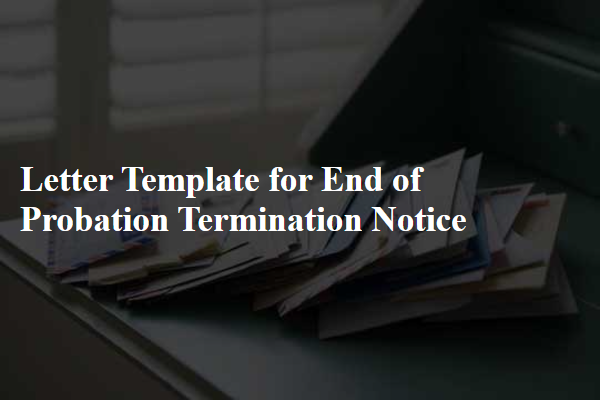
Comments